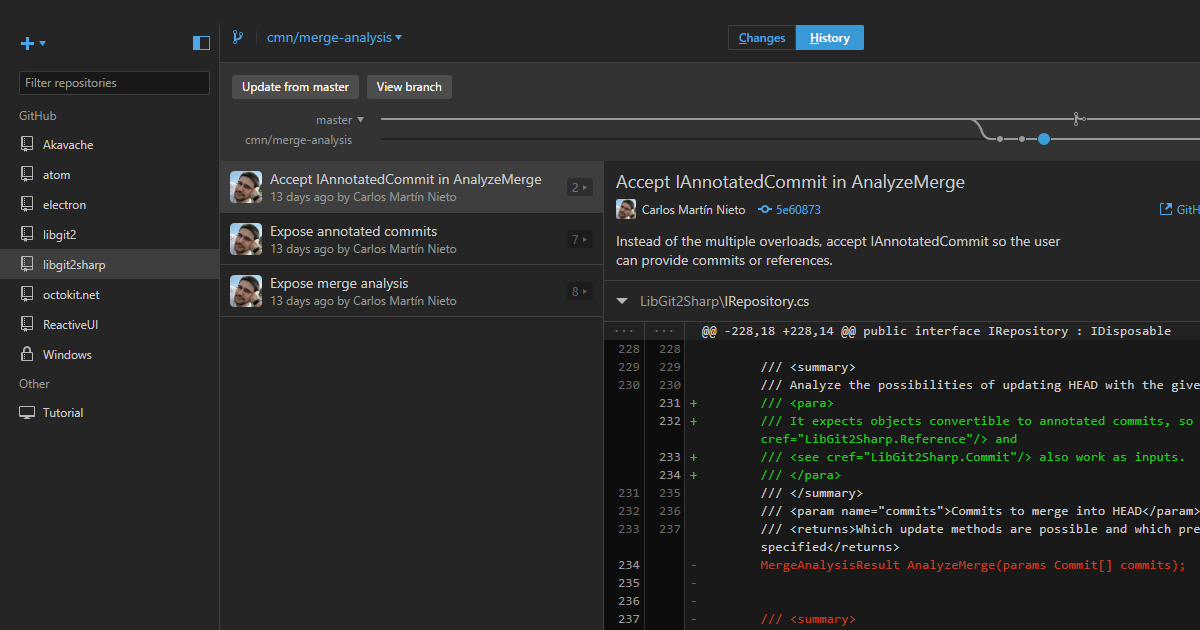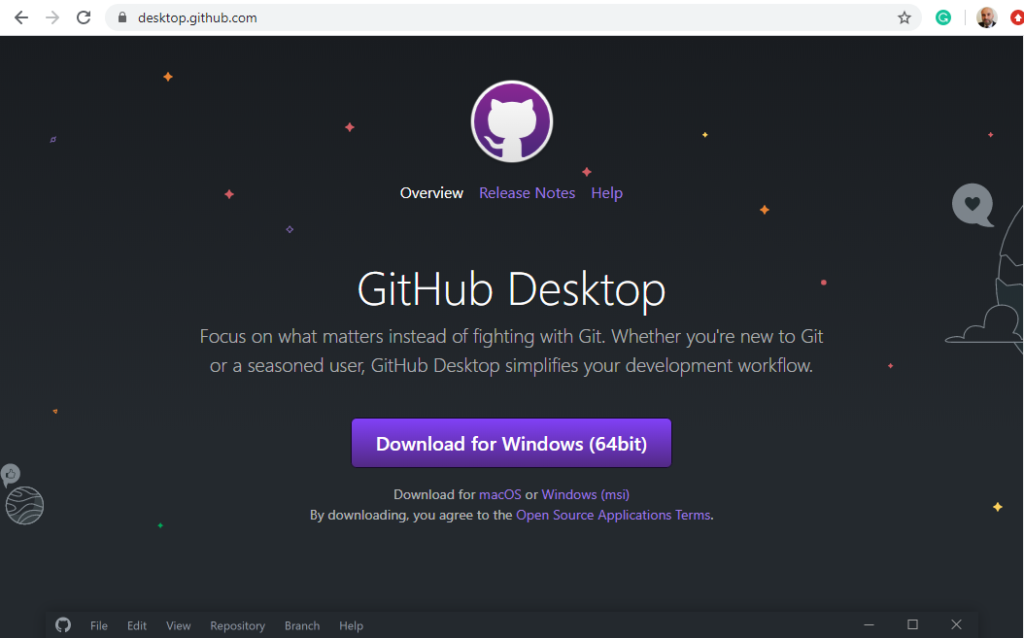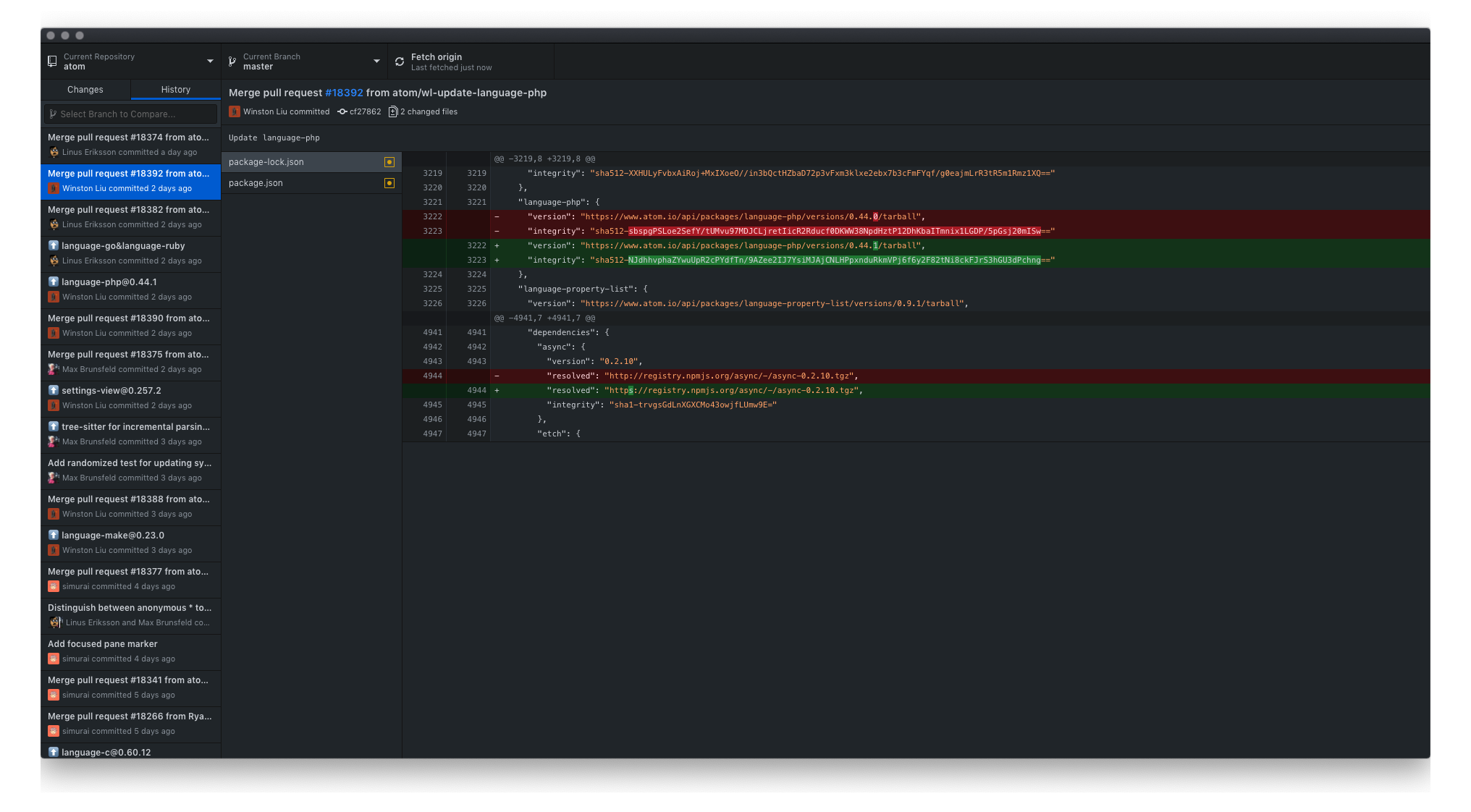

- GITHUB DESKTOP UPDATE INSTALL
- GITHUB DESKTOP UPDATE UPDATE
- GITHUB DESKTOP UPDATE CODE
- GITHUB DESKTOP UPDATE WINDOWS
If you can't find an issue that matches what you're seeing, open a new issue,Ĭhoose the right template and provide us with enough information to investigateįurther. That are being tracked against Desktop, and some of these issues have workarounds. To see if your issue hasn't already been reported (it may also be fixed).
GITHUB DESKTOP UPDATE CODE
Note: The GitHub Desktop Code of Conduct applies in all interactions relating to the GitHub Desktop project. This document describes the focus of GitHub Desktop and who the product is most useful for. Is GitHub Desktop right for me? What are the primary areas of focus? Installers for various Linux distributions can be found on the
GITHUB DESKTOP UPDATE INSTALL
macOS users can install using Homebrew package manager:.
GITHUB DESKTOP UPDATE WINDOWS
Windows users can install using winget c:\> winget install github-desktop or Chocolatey c:\> choco install github-desktop.There are several community-supported package managers that can be used to The release notes for the latest beta versions are available here. Want to test out new features and get fixes before everyone else? Install theīeta channel to get access to early builds of Desktop: Linux is not officially supported however, you can find installers created for Linux from a fork of GitHub Desktop in the Community Releases section. It is written in TypeScript andĭownload the official installer for your operating system:



GITHUB DESKTOP UPDATE UPDATE
I want to save my code to the repository (Committing) įollow these steps if you have edited some code, and want to update the repository with your changes. Visual Studio Code will now open with the code from the repository. Then click the Open in Visual Studio Code option:.In the menubar, click the Repository option.Click the Clone button, and wait until it has finished cloningĬongrats! You have successfully cloned a repository from Github! 🎉 I want to open Visual Studio Code with code from my repository įollow these steps if you already have the repository on your computer and you want to edit the files.The "Local Path" input controls where the files will end up on your computer.Then paste the URL that you copied before into the "URL or username/repository" input: In the Clone Repository modal, make sure you are on the URL tab.Open Github Desktop, and click on the File menu and then click Clone Repository:.Copy the URL (Pro Tip: you can click the clipboard icon on the right to copy automatically!).Click the "Code" button, which opens a menu:.For most of your coursework this will likely be.Open the repository on Github in your browser.Github Desktop might look a bit different if are cloning the first repository on your computer.


 0 kommentar(er)
0 kommentar(er)
